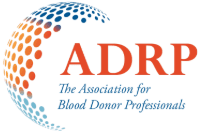Who donates? Patterns of blood donation and donor characteristics at a university-affiliated hospital-based donor center
Authors
Mana Sheykhsoltan, Wesley Wu, Zhen Mei, Dawn C. Ward, Alyssa Ziman
Abstract
Background
Blood donors are a crucial element of the blood supply chain. Optimal recruitment strategies built upon the robust understanding of local donor behavior and demographics—specifically, the donor characteristics of our university-affiliated hospital-based donor center—improve outreach and retention of donors.
Study design and methods
This retrospective study analyzed blood donors’ genders, ethnicities, and donation frequencies at a university-affiliated hospital-based donor center from 2014–2019, stratified into seven age cohorts. Donor ethnicity demographics were compared to the reported student, employee, and LA County population.
Results
Female donors outnumbered male donors in all age cohorts. The majority of donors self-identified (SI) as White (36.7%), Hispanic/Latino (21.6%), or Asian (19.1%). Older donors (age > 25) donated more frequently (4.1 vs. 2.3 donations per donor) than younger donors (age ≤ 25). Repeat donors who donated in multiple years during the study period were more likely to donate multiple times each year than those donors who only donated during 1 year.
Discussion
Our donor demographics more closely reflect the university student and employee demographics than LA County demographics, demonstrating the broad local efforts of recruitment by student groups and donor center recruitment staff. However, non-White populations continue to be underrepresented. The majority of donors only donated once during the study period. Recruitment strategies to increase donor engagement among underrepresented populations and increase the proportion of repeat donors are likely to prove most beneficial.
November 13, 2021
Related Resources
Engaging blood donors as advocates Social media preferences and associations with marketing
Background: Various critical medical procedures would become impossible without blood donations—saving lives in emergencies, surgeries, and chronic conditions like thalassemia. Therefore, it seems crucial to enhance donor recruitment and ensure…
Rethinking the role of older donors in a sustainable blood supply
INTRODUCTION Many countries, particularly high human development index countries, are facing the challenge of an aging population.1 For Blood Collection Agencies (BCAs) in these countries, an aging population poses two…


